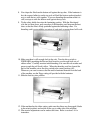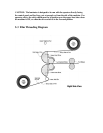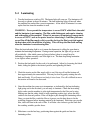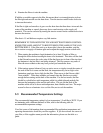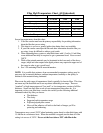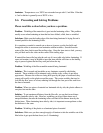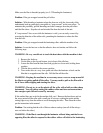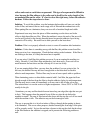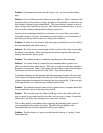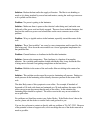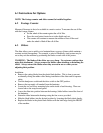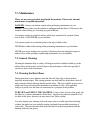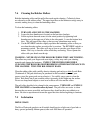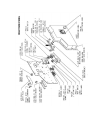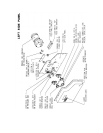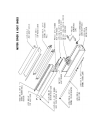Problem: A laminated item comes out with a large “oily” spot on or near the leading
edge.
Solution: It’s not oil that causes this effect, but excess adhesive. When a machine is left
heated but idle for a few minutes or longer, the adhesive from the film over the shoes can
form droplets if material is put in immediately. This excess adhesive saturates an area of
paper, creating what looks like an oily spot. The solution, as mentioned above, is just to
let a few inches of film go through before feeding in your work.
Anytime you are laminating unfamiliar or costly items; it is a good idea to start with an
expendable sample or test piece. Laminating a test piece first gives you an indication of
the results you will get and also takes care of any pooled adhesive.
Problem: A milky, hazy line about an inch wide appears periodically across the width of
the web immediately after initial warm-up.
Solution: The rollers are not evenly heated, and the cold side of the rollers is preventing
the adhesive from melting. When warming up the machine, keep the rollers open and
keep the forward drive on low speed.
Problem: The machine produces a continuous squealing noise when laminating.
Solution: To a certain extent, it is normal for some laminating film to squeal as it is
pulled over the heat shoes under tension. This noise is produced via the same principles
that make a violin squeal. Some of the compounds put on film to keep it from sticking to
itself seem to act like resin on the bow of the violin – they enhance the noise.
To minimize squealing, run the laminator with the least amount of supply roll tension that
will do the job of removing wrinkles from the web of film. Make sure you are not using
a higher temperature than needed and clean the heat shoes periodically. If the noise gets
really objectionable, use a different type or different brand of film.
Problem: The laminated material seems to have a pitted surface or irregular surface that
does not match the texture of the paper being coated.
Solution: This is usually caused by adhesive build-up or dirt on the rubber rollers, but
may be caused by any matter stuck to the rollers, such as a piece of paper. Inspect the
rubber rollers and if they need cleaning refer to the owner’s manual.
Cuts or other damage to the rubber rollers, especially the laminating rollers, can also
cause irregularities in the surface of the film. The pull rollers are identical to the
laminating rollers and could be substituted if still in good condition.
Problem: The film shrinks as it passes over the heat shoe (known as “necking” in the
laminating trade).



